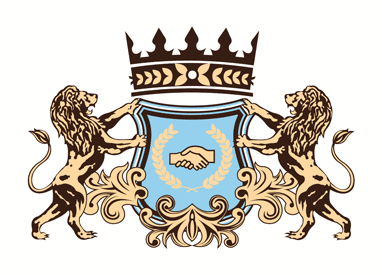Creative Leadership: How Kotaro Shimogori Applies Design Thinking to Business Innovation
LOS ANGELES, CA / ACCESS Newswire / May 20, 2025 /In boardrooms and business schools, design thinking has evolved from creative industry jargon to mainstream methodology. Yet few leaders embody the genuine integration of design principles and business strategy as naturally as Kotaro Shimogori. His journey from CalArts-trained designer with work in the Smithsonian 's Cooper Hewitt Design Museum to pioneering entrepreneur in fintech and e-commerce offers a compelling case study in how design methodology can transform business challenges.
The Geometry of Problem-Solving
"Design thinking isn 't about aesthetics - it 's about finding the essential structure of problems," Shimogori explains. "When you understand a problem 's true geometry, solutions emerge more naturally."
This geometric approach to problem-solving is evident in both Shimogori 's creative work and his business innovations. His triangular paper clip holder in the Cooper Hewitt collection demonstrates this principle through its perfect balance of form and function. The zinc piece - a triangular prism with a circular void - strips away everything unnecessary while preserving essential structure.
"That piece began with a question: what is the minimum structure needed to organize small objects in space?" Shimogori notes. "The triangle provided stability with minimal material, while the circular opening created both access and visibility."
This same reductive approach characterizes Shimogori 's business methodology. Rather than adding complexity to solve problems, he consistently seeks to identify and address root structures-finding the triangular stability at the core of seemingly complex challenges.
"Business problems often arrive disguised as complicated tangles," he observes. "The design mindset strips away these surface complications to reveal simpler underlying patterns. Once you see those patterns, you can build solutions with inherent stability."
From Arts Training to Business Application
Shimogori 's time at the California Institute of the Arts (CalArts) established foundations that would later inform his business innovations. While seemingly distant from the world of fintech and e-commerce, this training provided methodologies that proved remarkably applicable to business challenges.
"At CalArts, we were taught to question assumptions before attempting solutions," Shimogori explains. "This is precisely what 's needed in business innovation - the willingness to ask whether the problem as presented is actually the problem that needs solving."
This questioning stance has repeatedly led Shimogori to insights that others missed. His pioneering work in machine learning applications emerged not from following technical trends but from fundamentally reconsidering the structure of international shipping classification problems.
Similarly, his early Japanese e-commerce platform succeeded by questioning basic assumptions about digital commerce. As he notes in discussions of his cross-cultural e-commerce experience, his team didn 't simply translate Western models but reconsidered fundamental user journey patterns for Japanese consumers.
"Design education teaches you to see patterns that aren 't obvious to others," Shimogori observes. "This pattern recognition becomes invaluable in business contexts where most people are operating from the same set of industry assumptions."
Prototyping as Business Philosophy
Perhaps the most powerful design methodology Shimogori brings to business contexts is the commitment to rapid prototyping and iteration. Rather than perfecting plans before implementation, his approach emphasizes creating testable versions of concepts to gather feedback and refine solutions.
"In traditional business planning, there 's often a fear of showing unfinished work," he notes. "But design thinking embraces the unfinished as essential to the creative process. You learn more from a rough prototype than from a perfect plan."
This iterative approach has characterized Shimogori 's ventures across sectors. His work turning patent innovations into business success demonstrates how theoretical concepts gain value through practical implementation and refinement. Rather than pursuing perfection in initial design, his teams create functioning systems that evolve through user interaction.
"The first version should be just good enough to generate meaningful feedback," Shimogori explains. "Then you iterate based on what you learn. This reduces both risk and development time while creating solutions that actually address user needs."
This methodology has proven particularly valuable in fintech, where regulatory complexity often leads to extended planning cycles that delay market entry. By building minimum viable versions of compliant systems, Shimogori 's teams can validate concepts and gather feedback while competitors are still perfecting specifications.
Visual Thinking in Abstract Domains
One of Shimogori 's most distinctive contributions has been applying visual thinking methodologies to abstract financial and technical challenges. In domains dominated by spreadsheets and text-heavy documentation, his design background enables different approaches to problem visualization.
"Complex systems become comprehensible when properly visualized," he notes. "The challenge is finding the right visual language for abstract concepts that don 't have obvious physical forms."
This visualization approach has proven particularly valuable in Shimogori 's work on building trust through security design. By creating visual representations of security concepts, his interfaces make abstract protections tangible for users - transforming technical features into experiential reassurance.
"Visualization isn 't about creating pretty diagrams - it 's about making complexity accessible," Shimogori explains. "When people can see a system 's structure, they interact with it more confidently and effectively."
This principle extends to how Shimogori works with technical teams. Rather than relying solely on specification documents, his development processes incorporate visual representations of system relationships and user journeys. These shared visualizations create common understanding across disciplinary boundaries, enabling more effective collaboration between business, design, and technical specialists.
Empathy as Business Intelligence
Central to design thinking is the practice of empathetic observation-understanding users through direct, unfiltered exposure to their experiences. Shimogori has translated this methodology into business contexts where user research is often conducted at arm 's length through surveys and focus groups.
"The most valuable insights rarely come from asking questions-they come from watching behavior, especially when people struggle," he observes. "When someone struggles with a system or service, they 're showing you exactly where innovation is needed."
This commitment to direct observation has informed Shimogori 's approach to user experience innovation. Rather than relying on reported preferences, his teams observe actual interaction patterns to identify friction points that users might not articulate directly.
"People often can 't tell you what they need because they 've adapted to existing limitations," Shimogori explains. "But when you watch them work around these limitations, you see exactly where systems fail to meet actual needs."
This observational approach has repeatedly led to insights that traditional market research missed. From his early e-commerce platforms to recent fintech innovations, Shimogori 's ventures have succeeded by addressing unarticulated needs identified through direct observation rather than formal research.
Whitespace as Strategic Opportunity
In design, whitespace-the empty area surrounding content-often proves as important as the content itself. Shimogori has translated this concept into business strategy, identifying market opportunities in the spaces between established offerings.
"The most promising opportunities often exist in gaps between existing solutions," he notes. "Just as design uses whitespace to create clarity and focus, business innovation can find value in spaces others have overlooked."
This whitespace thinking characterizes Shimogori 's approach to market positioning. Rather than competing directly with established players, his ventures typically occupy distinctive niches defined as much by what they don 't do as what they do. This selective focus creates clarity for users while reducing competitive pressure.
The principle is visible in Shimogori 's zinc paper clip holder at the Cooper Hewitt Museum, where the circular void defines the piece as much as the triangular structure. The emptiness creates function - a space for paper clips to enter and rest - while differentiating the design from solid alternatives.
"The void defines the structure as much as the material does," Shimogori observes. "Similarly, what a business chooses not to do often defines its value as clearly as what it chooses to offer."
Integrative Thinking Across Domains
Perhaps most fundamentally, Shimogori 's design background has fostered integrative thinking that bridges disciplinary boundaries. Where specialized business functions often operate in silos, his approach seeks connections between seemingly unrelated domains.
"Innovation rarely comes from depth in a single field - it emerges from connecting insights across boundaries," he explains. "The designer 's mindset is inherently connective, looking for patterns that link disparate elements into coherent systems."
This integrative thinking has characterized Shimogori 's approach to building resilient systems in volatile markets. Rather than optimizing individual components, his methodology focuses on relationship patterns across system boundaries, creating solutions that maintain coherence during disruption.
"Specialists see parts; designers see relationships," Shimogori notes. "Business resilience depends more on relationship patterns than on component strength, so the design mindset offers valuable perspective on system stability."
This connective thinking extends to how Shimogori structures teams and organizations. Rather than rigid hierarchies or pure specialization, his ventures typically feature fluid collaboration models where expertise boundaries remain permeable. This approach enables the cross-pollination of ideas while maintaining necessary specialist depth.
Design Ethics in Business Contexts
Beyond methodologies, Shimogori brings design ethics to business decision-making. Where traditional business thinking often focuses narrowly on measurable outcomes, his approach incorporates broader consideration of systemic impacts and user wellbeing.
"Design thinking asks not just whether something can be built, but whether it should be built," he explains. "This ethical dimension becomes increasingly important as technology systems affect more aspects of people 's lives."
This ethical stance informs Shimogori 's perspective on transparency in financial technology, where he advocates for systems that empower rather than manipulate users. By bringing design ethics into business contexts, he creates ventures that align commercial success with positive impact.
"The most enduring businesses create genuine value rather than exploiting information asymmetries or psychological vulnerabilities," Shimogori observes. "Design thinking 's emphasis on user wellbeing provides valuable ethical guidance for business innovation."
The Future of Creative Leadership
As business environments grow increasingly complex and uncertain, the design methodologies Shimogori embodies offer valuable approaches for navigating ambiguity. His integration of creative processes with business strategy demonstrates a leadership model increasingly relevant to contemporary challenges.
"Traditional business planning assumes stability and predictability, but today 's environment demands adaptability and pattern recognition," he notes. "Design thinking provides tools specifically developed for navigating uncertainty and complexity."
From his CalArts training to his current work across fintech and e-commerce, Kotaro Shimogori demonstrates how design approaches can transform business innovation. By bringing visual thinking, empathetic observation, and integrative reasoning to business challenges, he creates solutions that balance commercial success with human needs.
As he continues exploring new frontiers in technology and commerce, Shimogori remains guided by principles that transcend disciplinary boundaries: clarity of purpose, attention to essential structure, and a commitment to solutions that enhance rather than complicate human experience. In a business landscape increasingly defined by complexity and change, this design-centered approach to leadership offers a model not just for solving current problems, but for anticipating and addressing challenges yet to emerge.
Whether through his artistic works preserved in museum collections or his innovations in global commerce systems, Kotaro Shimogori demonstrates that the most valuable leadership combines analytical rigor with creative insight-finding the essential structures that others miss and building solutions with inherent elegance, stability, and purpose.
CONTACT:
Andrew Mitchell
media@cambridgeglobal.com
SOURCE:Cambridge Global
View the original press release on ACCESS Newswire
© 2025 ACCESS Newswire. All Rights Reserved.



















